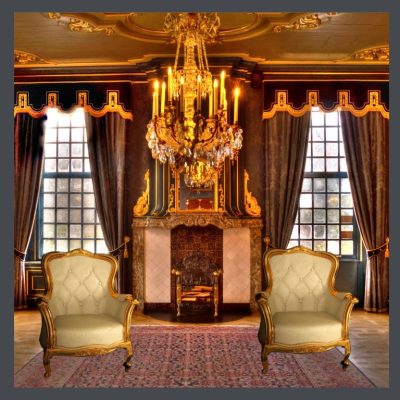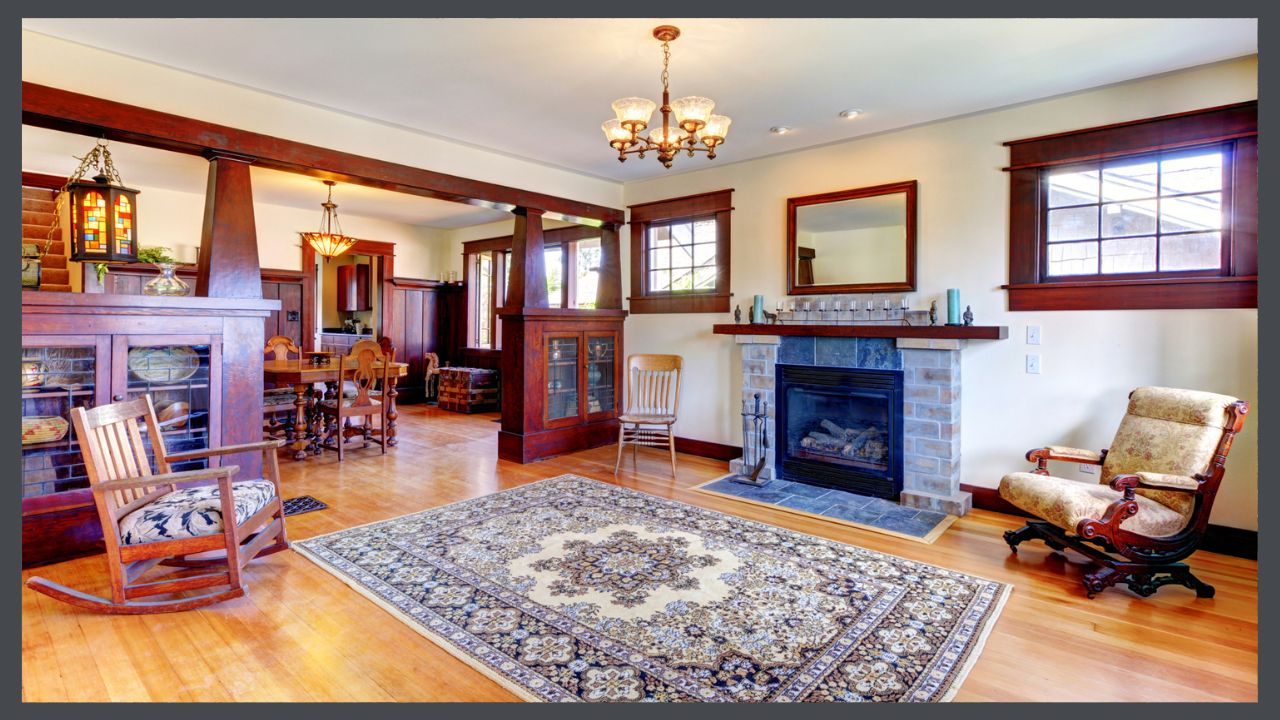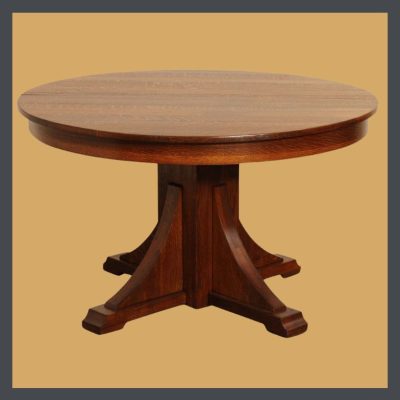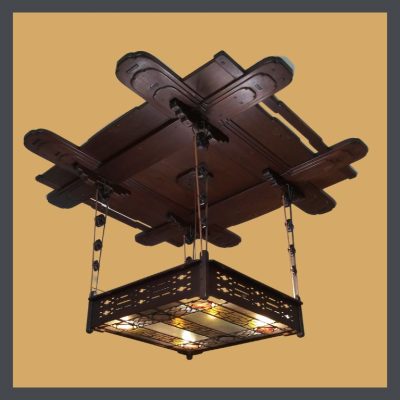BASIC DESIGN FOR A CRAFTSMAN HOUSE INTERIOR
 What is interior design? It is a combination of art, science & technology that is employed to enhance the quality of our lives. It is also about understanding how people operate in a space in order to make it functional. In this article, we’re going to look at the elements of basic design for a Craftsman house interior
What is interior design? It is a combination of art, science & technology that is employed to enhance the quality of our lives. It is also about understanding how people operate in a space in order to make it functional. In this article, we’re going to look at the elements of basic design for a Craftsman house interior
When you’re talking about interior design in a bungalow, you must add history & philosophy, & you must also consider the science of that time as well as the technology & the materials that were available then. For example, the main parts of a house are built with wood- both structural & decorative. The wood available at that time was from old-growth forests. These were decimated over a century ago.
However, though times have changed, basic design theory has not. Let’s go through the basics, starting with the 8 elements, the word element being defined by Oxford as, “a part or aspect of something abstract, especially one that is essential or characteristic.” Example: “The death had all the elements of a great tabloid story.”
So let’s take a look at the parts/basics/rudiments of creating visual harmony- space, line, form (shape), pattern, light, texture, scale & color- to see how they relate to the Arts & Crafts Movement & how to apply them to your bungalow. Then we’ll trot through the principles of design in which you will combine these elements to create a home that pleases you, suits your needs & is within your budget.
USE OF SPACE IN BUNGALOW INTERIOR DESIGN
When we’re talking about space in interior design, we’re not referring to Buzz Lightyear, nor Howard Wolowitz, the creepy astronaut from Big Bang theory. Space, as applied to creating visual harmony in interiors is a 3 dimensional concept- simply the length, breadth & height of the room.
There are 2 types of space we must consider in our planning.
Negative Space
 Negative space is the area around & between objects, what we usually think of when we say space. It allows our eyes to pause & to see objects individually. With the use of negative space, the eye gets a rest.
Negative space is the area around & between objects, what we usually think of when we say space. It allows our eyes to pause & to see objects individually. With the use of negative space, the eye gets a rest.
When you look at Victorian room, you see little negative space. You are assaulted by color on color, pattern on pattern. The Industrial Age made this aesthetic possible with its introduction of mass production. Whereas it may have taken weeks or months to manufacture a single chair by hand, with machines, 100s of chairs could be cranked out in a single day. Ditto for textiles- draperies, rugs, pillows. Add accessory pieces to that & you get a highly ornate room, with no negative space. Even the windows are topped with valences, then heavy ceiling to floor curtains hang down in complex patterns, & are tied back with big, fluffy tassels.
Looking up, the ceiling features a gilded center medallion & multiple moldings. Following downward we may see perhaps 3 more ornate patterns & a fireplace with more curlicue carved moldings before our eyes drop to an oriental rug featuring still more colors & designs. And plopped on the rug is an abundance of furniture, again carved & again gilded.
Whew!
LESS IS MORE WHEN DESIGNING A BUNGALOW
Enter the Arts & Crafts era, with its protest against the excesses of Victorian design coupled with its elevation of craftsmanship. If you haven’t read the Introduction, take a moment now to do so because in the article there, AN ARGUMENT FOR SIMPLICITY IN HOUSEHOLD FURNISHINGS written in 1901 by one of the foremost influencers of the time, explains the aesthetic beautifully.
The founders of A&C Movement revered nature. When you get that uncomfortable feeling that you need some space, you head outdoors to open vistas & soaring skies- the peace & serenity of negative space. In Arts & Crafts design, each object gets its own space. Perhaps an object is part of a vignette, but individual groupings are displayed respectfully giving each one importance.

Prior to the Industrial Age other than for the very wealthy, minimalism was a necessity born of scarcity. With the Movement, especially in America with the influence of Stickley, interiors once again became simple & uncluttered. Negative space.
My mother taught me this concept when I was but a wee one. She pointed out to me a piece of jewelry sitting alone in a glass case in a museum. She explained that giving the piece space around it forced you to consider it alone & distinctly communicated its grandeur & high value.
Positive Space
 Positive space is the areas defined by objects- architectural details, furniture, textiles, artwork, lighting. The areas are where you want to direct the eye. Which objects you choose & how you place them will determine how the space will feel. Here you can employ all the rest of the elements- form, color, light & texture- to create a mood, tell your story, & enhance the existing features of your bungalow, as well as creating a space that will serve you & your family well.
Positive space is the areas defined by objects- architectural details, furniture, textiles, artwork, lighting. The areas are where you want to direct the eye. Which objects you choose & how you place them will determine how the space will feel. Here you can employ all the rest of the elements- form, color, light & texture- to create a mood, tell your story, & enhance the existing features of your bungalow, as well as creating a space that will serve you & your family well.
The well-know statement here by William Morris, “Have nothing in your house that you do not know to be beautiful or believe to be useful,” is a good guide here in creating a visually pleasing positive space. Should you not have the funds to buy beautiful things, please do not be tempted to buy objects to just fill that space. Rattle around in it until you are lucky or clever enough to acquire things that you truly love.
 Using the correct balance of positive & negative space will help you achieve the look that you want. Like the yin & yang of ancient Chinese philosophy, positive & negative spaces are opposite but complement or complete one another & interrelate to form a whole.
Using the correct balance of positive & negative space will help you achieve the look that you want. Like the yin & yang of ancient Chinese philosophy, positive & negative spaces are opposite but complement or complete one another & interrelate to form a whole.
An empty room is nonfunctional unless you like to sitting on the floor. It echoes & feels a bit lifeless & depressing. You instinctively want to add something to it!
A cluttered room is often just as nonfunctional. Just watch an episode of Hoarders! It is difficult to keep clean & orderly & your first instinct is to think about getting rid of some of the excess.
Well, it’s my reaction anyway!
THE IMPORTANCE OF LIGHT IN A BUNGALOW INTERIOR
 Light is a vital aspect of any space. A key characteristic of bungalows is that they tend to be on the dark side. Their shady porches & deep overhangs made them bearable before air-conditioning & their dark wood can feel oppressive prompting people to pull out the paintbrush. (Put it down, please.) Once against, contrast creates interest here & the correct use of color & lighting will make your house more livable & lovely.
Light is a vital aspect of any space. A key characteristic of bungalows is that they tend to be on the dark side. Their shady porches & deep overhangs made them bearable before air-conditioning & their dark wood can feel oppressive prompting people to pull out the paintbrush. (Put it down, please.) Once against, contrast creates interest here & the correct use of color & lighting will make your house more livable & lovely.
If you want to learn more about lighting, please visit my illuminating series of articles that cover this subject.
Even without a spectacular feature by Greene & Greene!
You can read more about Arts& Crafts lighting here.
In Part 3 we’ll take a look at some of the other elements of interior design & consider how they relate to the enhancement & enjoyment of your bungalow!
 STAY IN THE BUNGALOW KNOW!!!
STAY IN THE BUNGALOW KNOW!!!
Sign up for our newsletter & receive our FREE E-book, 7 VITAL Things to Do Before You Hire a Contractor.



0 Comments